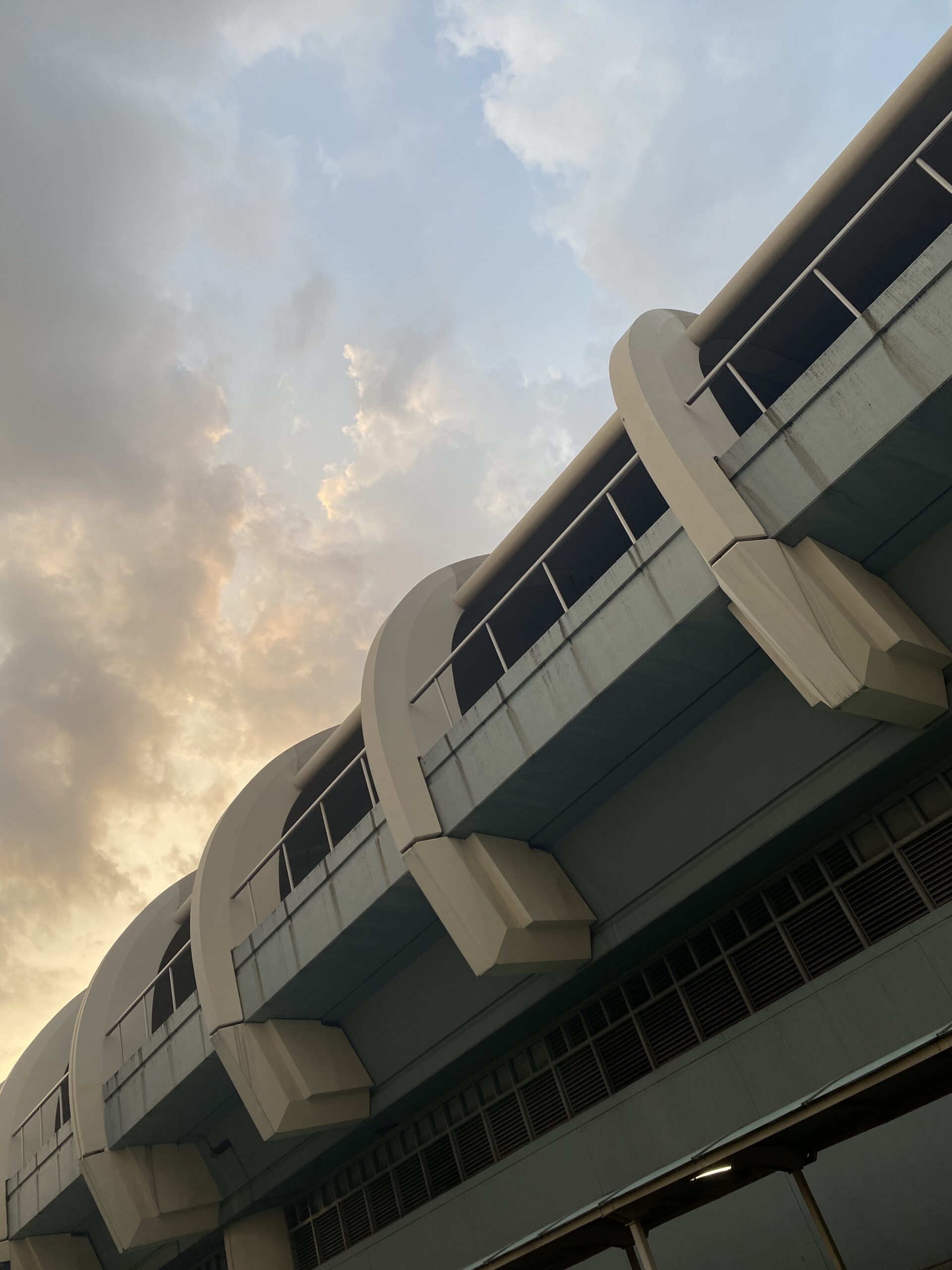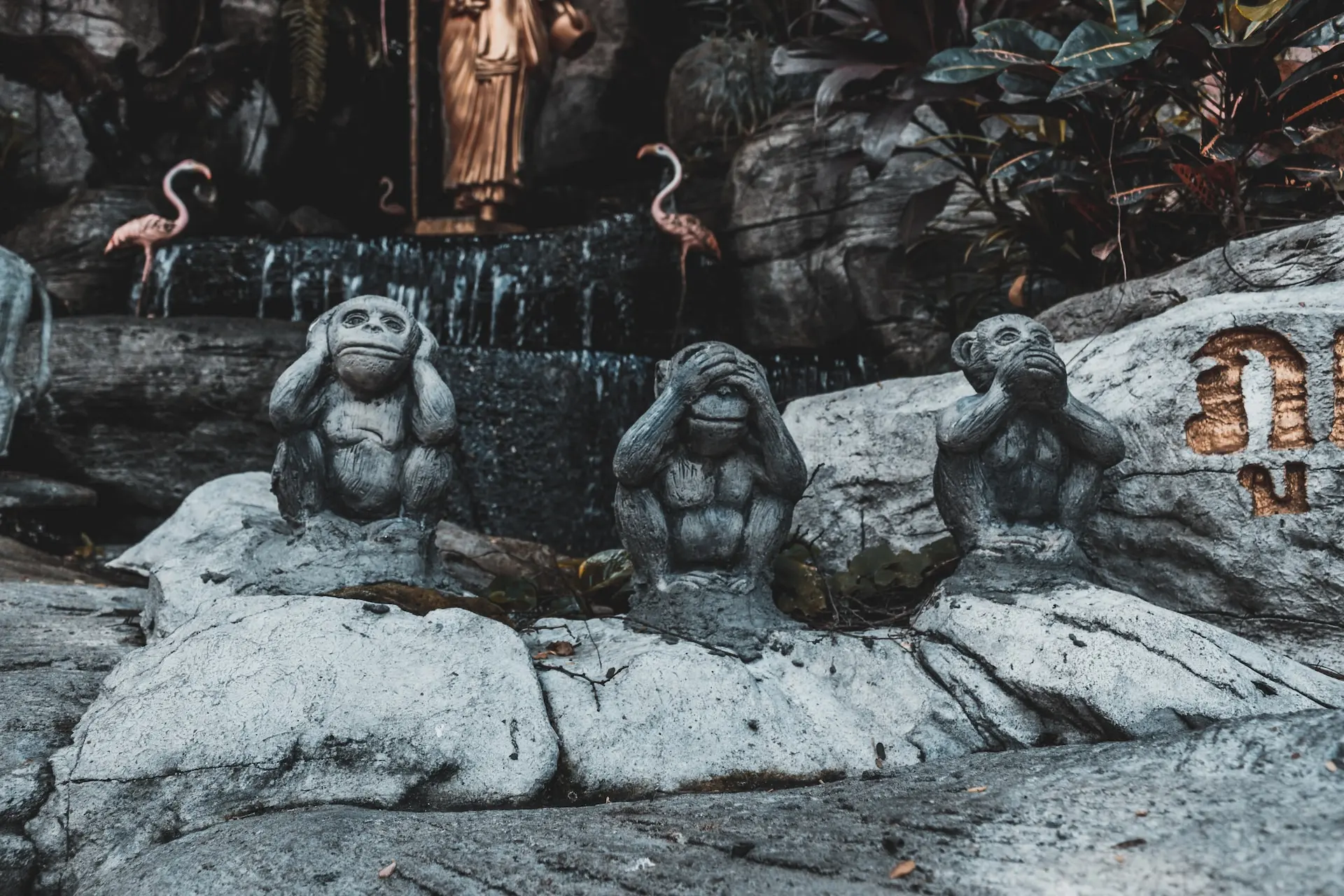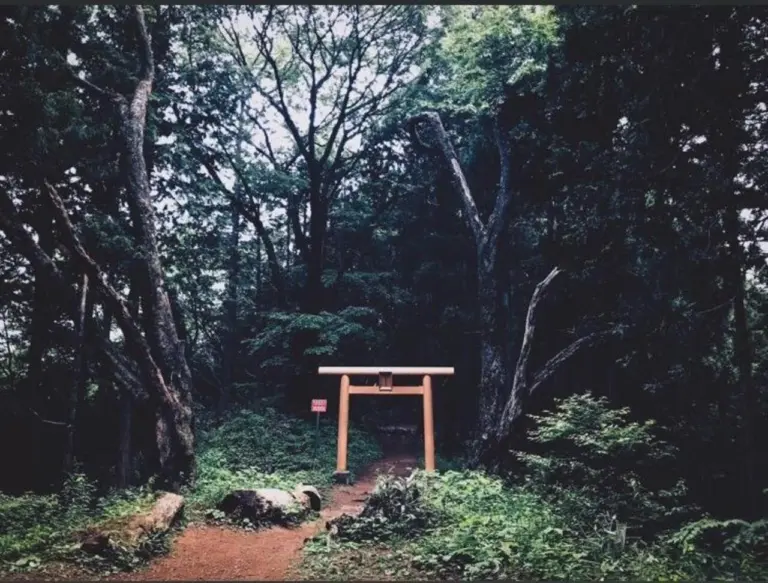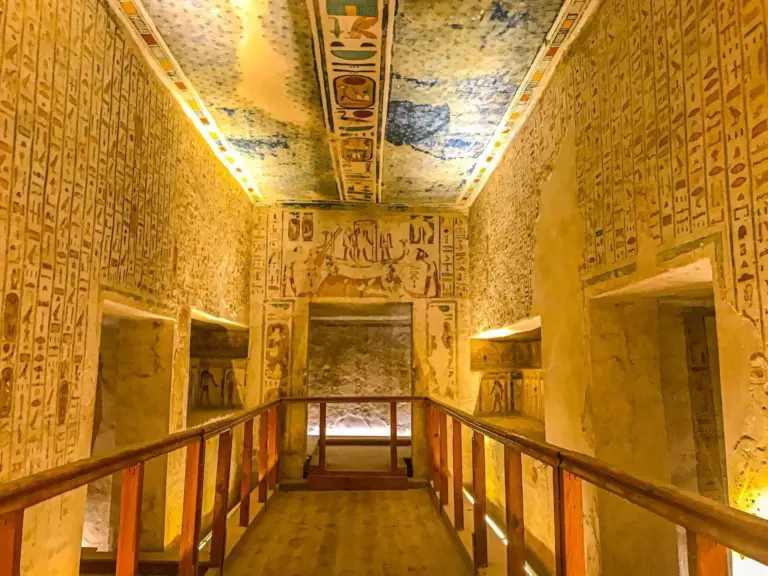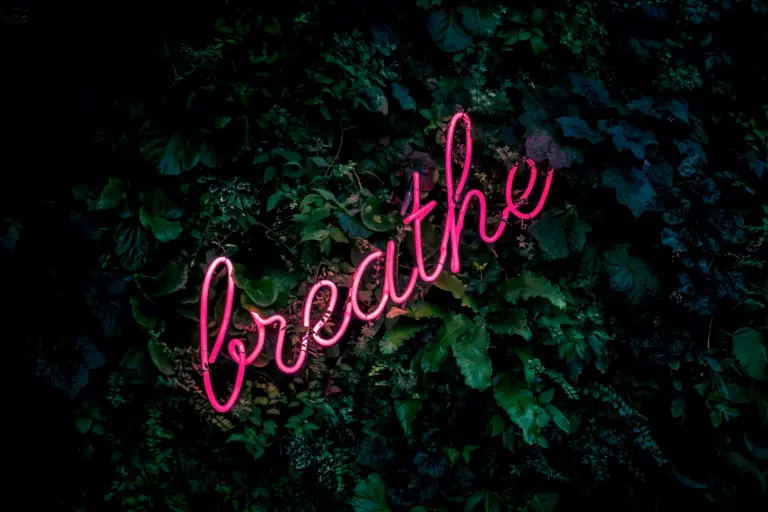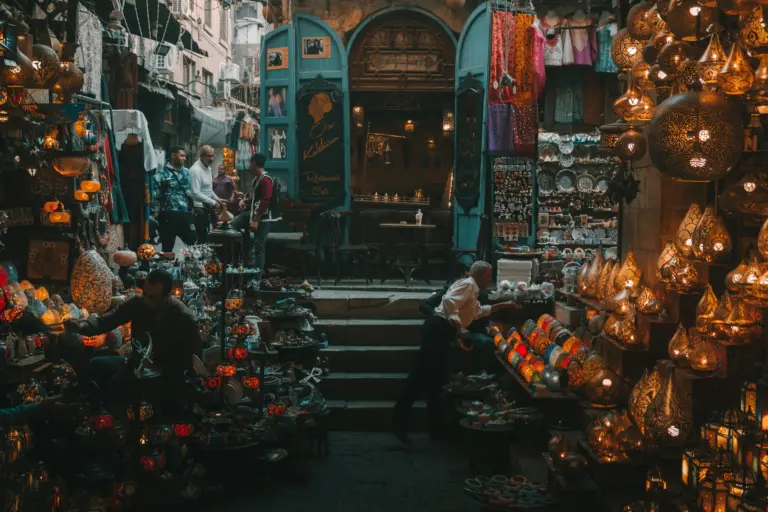Ready to explore the “Pearl of the Orient”? Well, you’ve come to the right place.
There’s something about Hong Kong that beckons travelers from every corner of the globe. Is it that classic aesthetic of its streets? The serene sanctity of its ancient temples? Or maybe it’s just the aroma of delicious dim sum? Either way, Hong Kong certainly has a rhythm that’s uniquely its own.
In this article, we’re not just skimming the surface, we’re diving deep into the city’s soul, from the architecture, culture, spirituality, and nature, we’re leaving no stone unturned here.
This isn’t your average guide; this is Hong Kong as you’ve never seen it before. Ready? Read on!
Table of Contents
Toggle
History of Hong Kong
The story of Hong Kong begins thousands of years ago, with archaeological evidence of human activity dating back to the Neolithic Age.
However, it wasn’t until the Qin Dynasty in 214 BC that the area was formally incorporated into China. For centuries, Hong Kong remained a peripheral area, known primarily for its fishing villages and salt production.
Fast forward to the 19th century, the First Opium War (1839-1842) between Britain and China dramatically altered Hong Kong’s destiny.
The war ended with the Treaty of Nanking in 1842, in which China ceded Hong Kong Island to Britain. This was the beginning of Hong Kong’s era as a British colony, and the island quickly became an important trading port.
Then, the city was dramatically impacted by the Second World War when it fell under Japanese occupation from 1941 to 1945.
After further negotiations between Britain and China, the Sino-British Joint Declaration was signed in 1984. This landmark agreement decided that the entirety of Hong Kong would revert to China under the principle of “one country, two systems”.
On July 1, 1997, Hong Kong was officially handed over to China, finally marking the end of 156 years of British colonial rule.
Hong Kong Culture Overview
Due to its fascinating history and geographical position, you’ll find that Hong Kong culture is largely shaped by a Cantonese core, influenced by periods of British colonization, and today, a renewed interaction with Mainland China.
The majority of Hong Kong residents are of Cantonese descent and the primary spoken language is Cantonese but Hong Kong culture is more than just being Cantonese as the country embraces a wide variety of influences from all around the globe being one of the leading international financial centres.
It is exactly this dynamic mix of East and West that gives Hong Kong its distinctive flair.
If you’d like a more detailed exploration of the local customs and traditions, as well as some key differences between Cantonese and Chinese cultures, you can jump on through here.
Best Places to Visit in Hong Kong
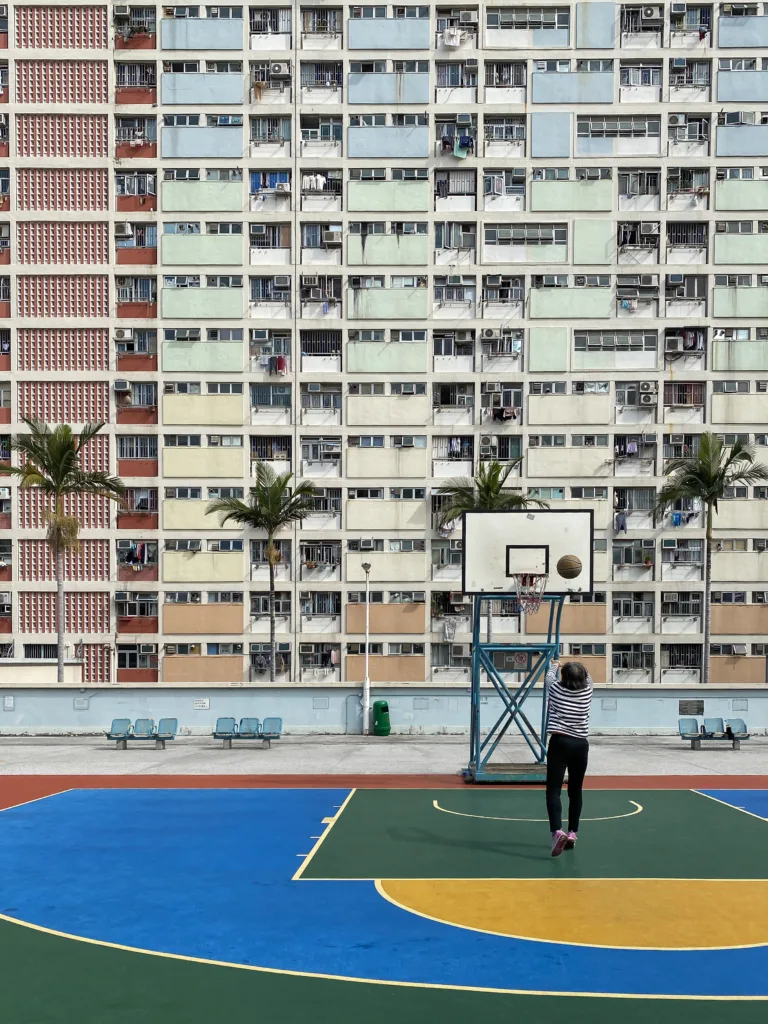
1. Choi Hung Estate
Choi Hung, translating to “Rainbow” in Cantonese, certainly lives up to its name with buildings painted in a beautiful array of pastel colors that seem to pop right out of a storybook.
What makes the Choi Hung Estate so special isn’t just its Instagram-worthy aesthetic, but also it provies a great opportunity to catch a glimpse of the local life.
Built in 1962, it’s one of the oldest public housing estates in Hong Kong, providing homes for thousands of residents over the years.
I was able to see a grandma playing some basketball which resulted to the beautiful photo you see above. There were also some students doing some exercises at the other side of the court.
Of course, just be mindful that these are actual people living here and you are just a visitor in their space. It’s all about the respect!
Learn how to get that perfect shot at Choi Hung Estate through photography composition!
Cost: Free
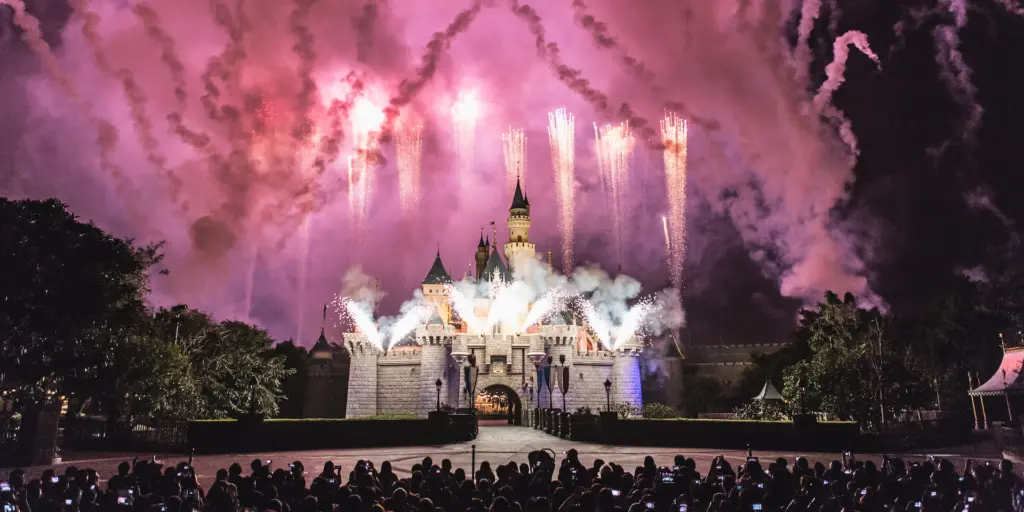
2. Hong Kong Disneyland
Whether you’re traveling with kids or simply a kid at heart, Hong Kong Disneyland is always a classic spot to visit. The park is divided into seven themed lands: Main Street, U.S.A., Fantasyland, Adventureland, Tomorrowland, Grizzly Gulch, Mystic Point, and Toy Story Land, each boasting its unique rides, attractions, and entertainment.
You can easily spend a whole day here and of course, no visit to Disneyland would be complete without watching the fireworks display over the Sleeping Beauty Castle at the end of the day. It’s a sight that’s sure to leave you spellbound!
You can easily get your skip-the-line Disneyland tickets through here.

3. Monster Building
To be honest, Monster Building sounds like a nasty name but you’ll find out why it has earned this nickname soon enough.
Despite its rather intimidating moniker, there’s nothing scary about this place. In fact, it’s one of Hong Kong’s most sought-after photo locations, and for good reason.
The densely packed, overlapping residential blocks create a unique, symmetrical pattern that seems to stretch upwards endlessly, creating a surreal scene.
The Monster Building actually consists of five buildings, namely Oceanic Mansion, Fook Cheong Building, Montane Mansion, Yick Cheong Building and Yick Fat Building and just like the Choi Hung Estate, it offers a real-life glimpse into the local lifestyle albeit I would say this area is a bit more unassuming and not that clean.
Cost: Free
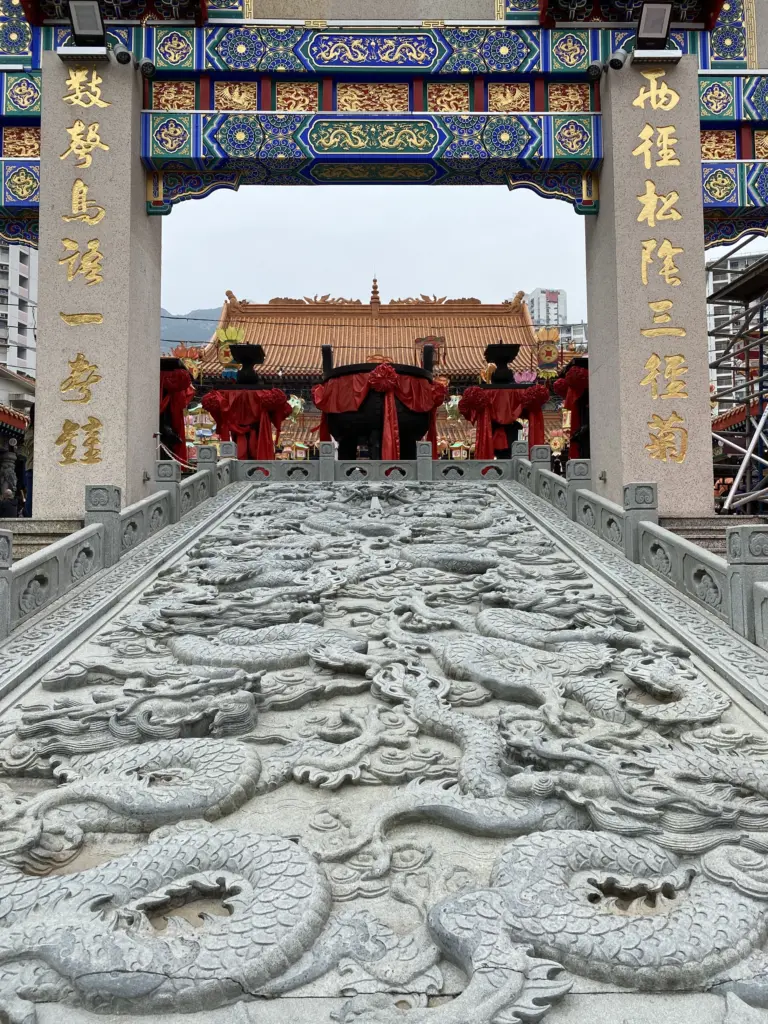
4. Wong Tai Sin Temple
This revered temple is dedicated to Wong Tai Sin, a Taoist deity associated with healing.
What makes Wong Tai Sin Temple so interesting for me is that you can experience religious syncretism in Hong Kong. Wong Tai Sin Temple may be a Taoist temple, but it’s also Buddhist and Confucian! You can see sections of the temple dedicated to each spiritual tradition. Basically three-in-one belief systems coexisting in harmony, how cool is that?
Cost: Free

5. Chi Lin Nunnery
Chi Lin Nunnery was first established in the 1930s but was reconstructed in the 1990s following the Tang dynasty architectural style.
It’s the world’s largest hand-made wooden building constructed without a single nail! This architectural wonder exudes an air of serene elegance with its complex of temples, lotus ponds, and beautifully manicured gardens.
Here you’ll find the mantra of “Namo Amituofo” being played all around the temple grounds, this is a prayer to Amitabha Buddha, a cosmic Buddha known as the Buddha of Infinite Light and Life. Hong Kong is primarily a Mahayana Buddhist country with a strong emphasis on Pure Land Buddhism.
Cost: Free


6. Nan Lian Garden
Just a stone’s throw away from Chi Lin Nunnery, this meticulously landscaped garden is a heavenly oasis in the middle of Hong Kong’s concrete jungle. The garden follows the style of the Tang Dynasty, one of the golden ages of Chinese civilization.
Covering an area of about 3.5 hectares, the Nan Lian Garden is characterized by its gorgeous hills, bodies of water, trees, rocks, and wooden structures.
Every element in the garden is placed according to specific rules and methods to achieve harmony and balance. It’s like the Chinese version of a Zen garden, because I definitely felt zenned out while exploring.
One of the garden’s showstoppers is the stunning Pavilion of Absolute Perfection. This golden, octagonal pavilion sits in the middle of a lotus pond, connected by twin Zi Wu Bridges.
Cost: Free
7. Victoria Harbour
Victoria Harbour sits at the very heart of Hong Kong. Known as one of the world’s most spectacular cityscapes, this natural, deep-water harbor sits between Hong Kong Island and the Kowloon Peninsula.
Victoria Harbour truly comes alive at night when it becomes a dazzling spectacle of light and color. And I mean that literally, the “Symphony of Lights” is a daily light and sound show that illuminates the skyline, transforming the harbor into a mesmerizing display.
This multimedia extravaganza has been recognized by the Guinness World Records as the world’s largest permanent light and sound show.
To fully enjoy this, secure a spot along the Tsim Sha Tsui Promenade or book a harbor cruise.
Cost: Free

8. Braemar Hill
With what we covered so far, you’ve seen Hong Kong from the ground and by the waters, but really the views from the top are where it’s really at.
Situated in the eastern part of Hong Kong Island, Braemar Hill (or Red Incense Burner Summit as it is locally known) offers one of the best vantage points to soak in the panoramic view of Hong Kong’s skyline.
I recommend coming here for sunset though be prepared to come earlier to secure a spot as the peak is just a couple of boulders that can fit a few people at a time.
A hike up to Braemar Hill is a great way to escape the city without actually leaving the city. It’s not a steep climb, depending on where you start it can be as short as 10 minutes or as long as an hour.
Cost: Free
Best Tours in Hong Kong
Here are some fun tours you can join in Hong Kong that’s sure to make your time worthwhile:
- Hop-On Hop-Off Bus Tour – discover Hong Kong’s best landmarks from an open-top double-decker bus.
- Landmarks Visit Tour – get to see all the highlights of Hong Kong with some food tasting in between!
- E-Sim Data Plan – get a speedy 4G eSIM Data Pack for Hong Kong to enjoy the convenience of staying online without switching SIM.
- Walking Tour – get a local perspective on Hong Kong’s top attractions and lesser-known parts of the city.
- Dark Side of Hong Kong Walking Tour – uncover the naked truth behind the glittering facade of Hong Kong.
- Airport Transfer – book a stress-free transfer between Hong Kong Airport and your accommodation.
Hidden Gems in Hong Kong

9. Waterfall Bay Park
The beauty of Hong Kong is that it blends the urban and natural in such a wonderful way. Can you believe that you can see an actual waterfall in a city?
As the name suggests, the star attraction of Waterfall Bay Park is its waterfall. Once upon a time, this was the main source of fresh water for passing ships in the 17th and 18th centuries. Today, it’s a secret spot that’s only known to the locals.
To find the waterfall, you have to keep going east until the end of the park where you will see that the path has been barricaded off. This is the trick, simply just go past the barricade and scale the fences, going down the stairs to reach a magnificent waterfall all to yourself.
The locals all do this so it’s perfectly fine, I even saw some locals below admiring the waterfall and on the other side you’ll have the view of the sea, a perfect place to have a picnic if I do say so myself!
Cost: Free
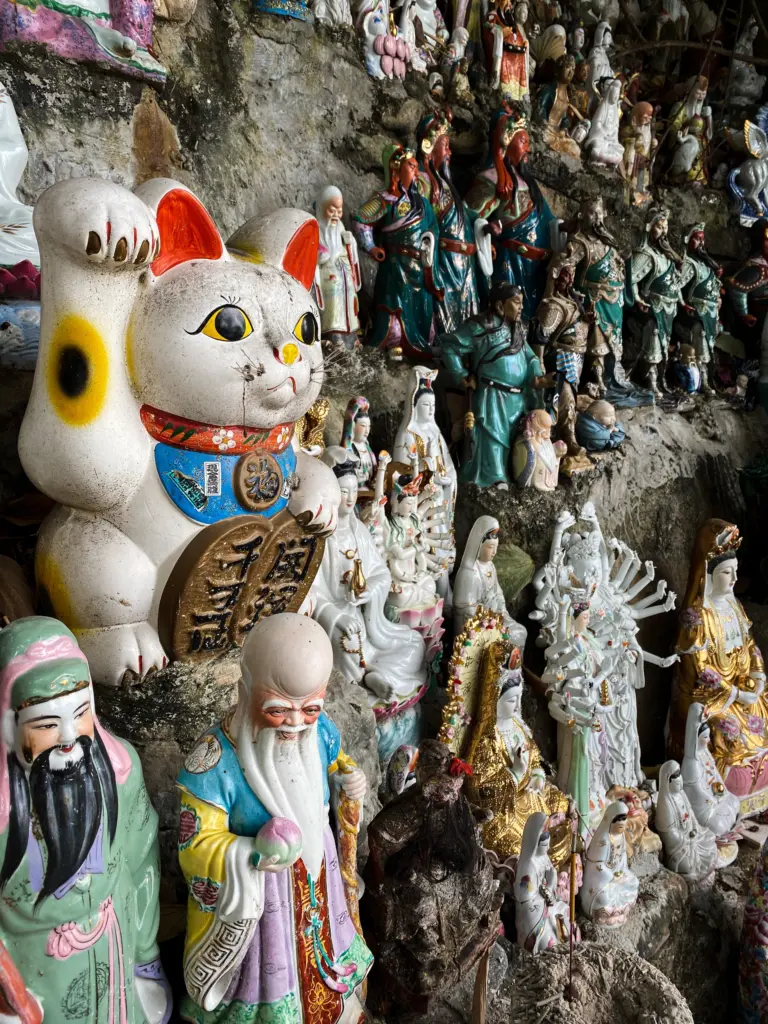

10. A Sky Full of Gods and Buddhas
This is an even bigger secret than the waterfall and it’s actually the most unique thing I have ever seen in Hong Kong.
Tucked away deeper at the otherside of Waterfall Bay Park, there’s this hillside where folks bring their household deities they can no longer keep.
Technically, it’s like the most sacred place in Hong Kong because idols from so many traditions like Buddhism, Hinduism, Taoism, and even a lucky cat have all gathered here! They seem like protectors, facing the sea as if sending their blessings to the world.
In Hong Kong, it’s inauspicious to throw away idols so this place has become some sort of an “Idol Cemetery,” but don’t let that deter you because the ambiance of this place is nothing short of tranquil.
People from all walks of life come here to worship here as well, so it’s become a really holy place.
Click the link to read more about A Sky Full of Gods and Buddhas and how to reach it with a visit to the Waterfall.
Cost: Free

11. Man Mo Temple
Man Mo Temple, one of the oldest and most well-known temples in the city, is located on Hollywood Road in the heart of Sheung Wan.
The temple was built in 1847 during the Qing dynasty and is dedicated to the gods of literature (Man Cheong) and war (Mo Tai).
A unique aspect of the temple is the presence of enormous incense spirals hanging from the ceiling, each burning slowly and filling the air with a mystical, smoky haze.
The temple is a mix of traditional Taoist design and colonial architecture, featuring beautiful wood carvings and a golden deer statue (which reminds me of the story of the Ramayana!)
It’s a small and quiet temple but the atmospheric vibe inside is worth experiencing.
Cost: Free

12. Ten Thousand Buddha Monastery
If you’re looking for an experience that combines exercise, spirituality, and stunning views, look no further than the Ten Thousand Buddhas Monastery.
Despite its name, this monastery is not actually a monastery as there are no resident monks and it’s actually managed by laypersons.
It’s also home to more than 10,000 Buddhas – around 13,000 to be exact!
Located in Sha Tin, to get there, you’ll need to climb a hill using a path that zigzags through a forest. As you make your way up the 431 steps, you’ll pass by a myriad of golden Buddha statues, each with a unique pose and expression.
Once at the top, you’ll be rewarded with the sight of the main temple complex. Here, you’ll find more Buddha statues, five temples, four pavilions, and a pagoda. The main temple houses a stunning array of nearly 13,000 miniature Buddha statues, each wall of is filled to the brim with them!
Reaching the Ten Thousand Buddhas Monastery can be an adventure. It’s about a 15-minute walk from Sha Tin MTR station, and the path to the monastery can be easy to miss. I know I did!
But keep an eye out for signs and follow the golden Buddhas, and you’ll be just fine.
Cost: Free
13. Kowloon Walled City Park
The Kowloon Walled City Park tells a compelling tale of the city’s dark past.
Previously, the area was home to the notorious Kowloon Walled City, a lawless enclave teeming with triads, unlicensed doctors, and squatters, all packed into a labyrinth of dark alleys, makeshift buildings, and crammed apartments.
In 1993, the Hong Kong government demolished the Walled City and converted it into a classical Chinese garden.
At the park’s center, you’ll find the Yamen, the only remaining original Walled City structure, which served as the administrative office and residence of the Imperial Chinese officials. Also preserved are the remnants of the South Gate, which was the main entrance to the Walled City.
The park is also home to an impressive bronze model of the Walled City, allowing you to understand the scale of this remarkable place before its transformation.
Cost: Free

14. Shek O Beach
The charming Shek O Beach – known for its powder-soft sands, clear blue waters, and stunning backdrop of hills, Shek O Beach offers a relaxing coastal retreat from the city.
It’s where I stopped by after doing the scenic Dragon’s Back trek and if you’re craving for some beach fun, this is a great place to bum out.
Cost: Free

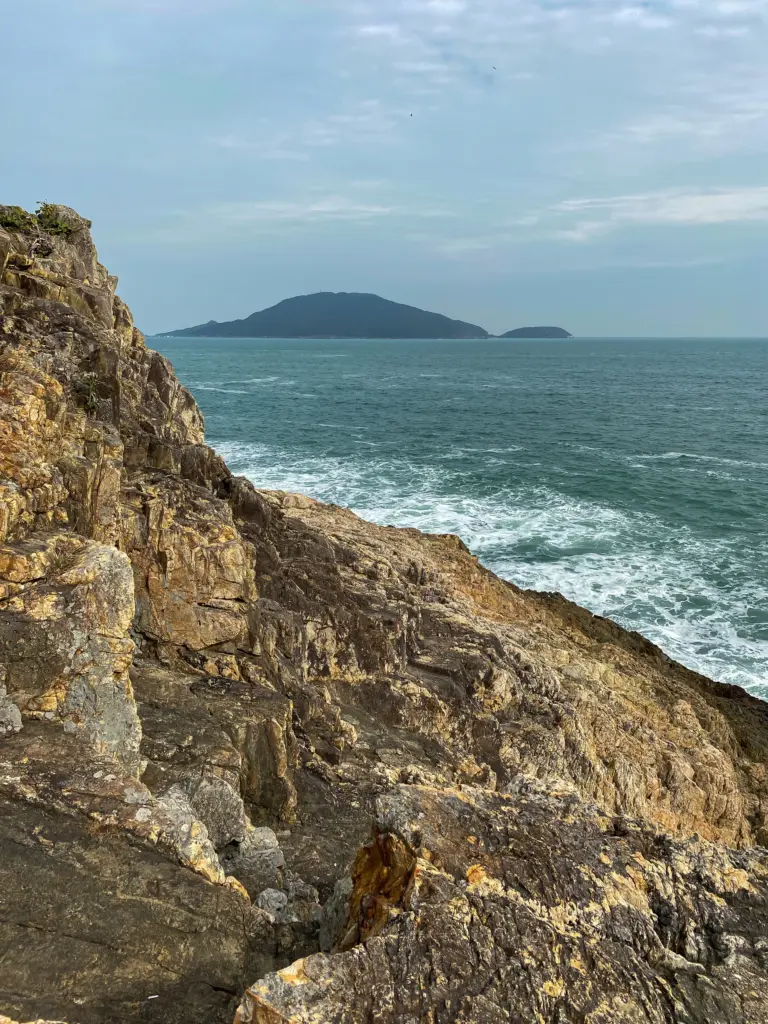
15. Big Wave Beach
The second beach I went to after Shek O, just because one wasn’t enough and it was just a few minutes walk away.
As you might guess from its name, Big Wave Bay is famed for its excellent surf conditions, especially during the summer months when the waves can reach impressive heights.
At the end of the beach, you’ll find rock carvings (petroglyphs) that date back to the Bronze Age, which have been declared monuments by the Antiquities and Monuments Office. This was one of the highlights for me as I didn’t expect to find such a gem at a beach, after a satisfying hike to boot!
Cost: Free

16. Ping Shek Estate
Back to Hong Kong’s architecture again, Ping Shek Estate isn’t as popular or grand as Choi Hung Estate or the Monster Building, but if you’re an avid architecture photographer, you wouldn’t want to miss this shot.
It’s just a few blocks away from Choi Hung Estate so after you’ve finished taking that shot of the rainbow, head here and go inside the courtyard and simply look up for a dizzying symmetrical geometric shot.
Cost: Free
Top Things to Do in Hong Kong
17. Claim Hong Kong's Highest Peak at Tai Mo Shan
As the highest peak in all of Hong Kong, Tai Mo Shan calls the brave and the bold. Standing at an impressive 957 m (3,140 ft), it’s a perfect place to challenge yourself with a vigorous hike while taking in the breathtaking scenery that Hong Kong has to offer.
The hike is considered moderately challenging, and depending on your pace, it can take around 4-5 hours to complete.
Known locally as “The Roof of Hong Kong,” the mountain is frequently enveloped in fog, giving it an ethereal, other-worldly ambiance. In the cooler months, it’s also one of the few places in Hong Kong where you can witness frost – a rare sight in a subtropical city!
If climbing up to the top is too much, you can still take the time and visit the famous Tai Mo Shan Waterfall and this highly rated tour can take you there.
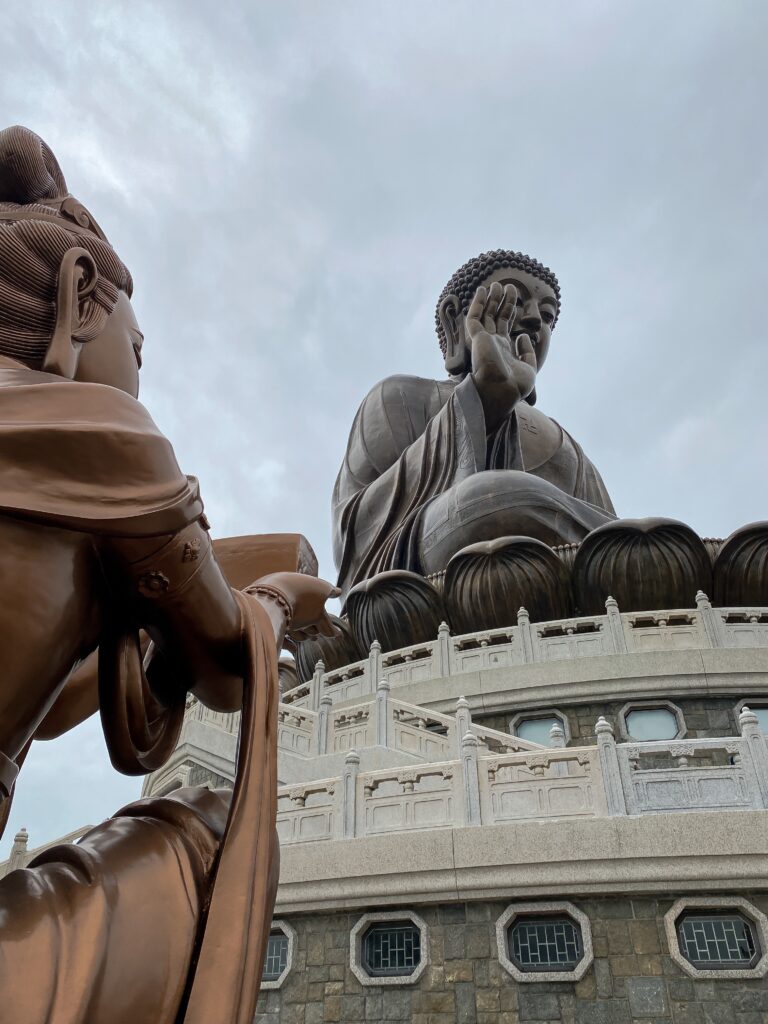
18. Visit the Big Buddha at Lantau Island
Head to Lantau Island to see the Big Buddha, otherwise known as the Tian Tan Buddha. Perched atop the verdant hills of Ngong Ping Plateau is the majestic bronze statue of Shakyamuni Buddha, the founder of Buddhism and the central figure in Theravada Buddhism.
Standing at 34 m (112 ft), the Big Buddha is one of the largest outdoor seated bronze Buddha statues in the world. Its grandeur is made even more impressive when you consider its location, with breathtaking mountainous views serving as the backdrop.
The journey to the Big Buddha is a memorable one. To reach the statue, you’ll need to climb 268 steps, but don’t worry, the effort is well worth it! The views up top are superb!
Surrounding the Big Buddha is the Po Lin Monastery, one of Hong Kong’s most important Buddhist sanctums.
Founded in 1906, this monastery is home to many a monk and houses invaluable Buddhist scriptures, not to mention being a great place to enjoy a vegetarian meal.
Head right on here to discover the numerous activites to do on Lantau Island.
You can also book a tour going to Lantau Island along with a cable car ride through here.

19. Hike the Dragon's Back Trail
Named by Time Magazine as the best urban hiking trail in Asia, the Dragon’s Back trail is an adventure that should be on every nature-lover’s Hong Kong itinerary.
If you’re wondering if the Time Magazine’s verdict is vindicated, the answer is a resounding yes.
The Dragon’s Back trail stretches over 8.5 km (5.2 mi) and the name comes from the path’s undulating shape, reminiscent of a dragon’s spine, as it snakes along a ridge between Shek O Peak and Wan Cham Shan.
Don’t worry if you’re not an experienced hiker; the Dragon’s Back trail is suitable for all fitness levels.
If you’re keen on tackling the Dragon’s Back, you can read the Dragon’s Back hiking guide I made.
You can also join a guided trek if you’re interested.
20. Dine with a View at Victoria Peak
Eating is always an adventure in Hong Kong but if you want to combine your dining experience with a fantastic view, there’s no place better than Victoria Peak.
Known locally as The Peak, this is the highest point on Hong Kong Island, and it offers the best skyline view in town – day or night.
Whether you’re in the mood for classic Cantonese cuisine or a simple cup of coffee, you can find it here. And while the food is certainly delicious, it’s the view that steals the show.
To reach the dining area, you can take the iconic Peak Tram, a funicular railway that offers its own stunning views as it trundles up the steep hillside.
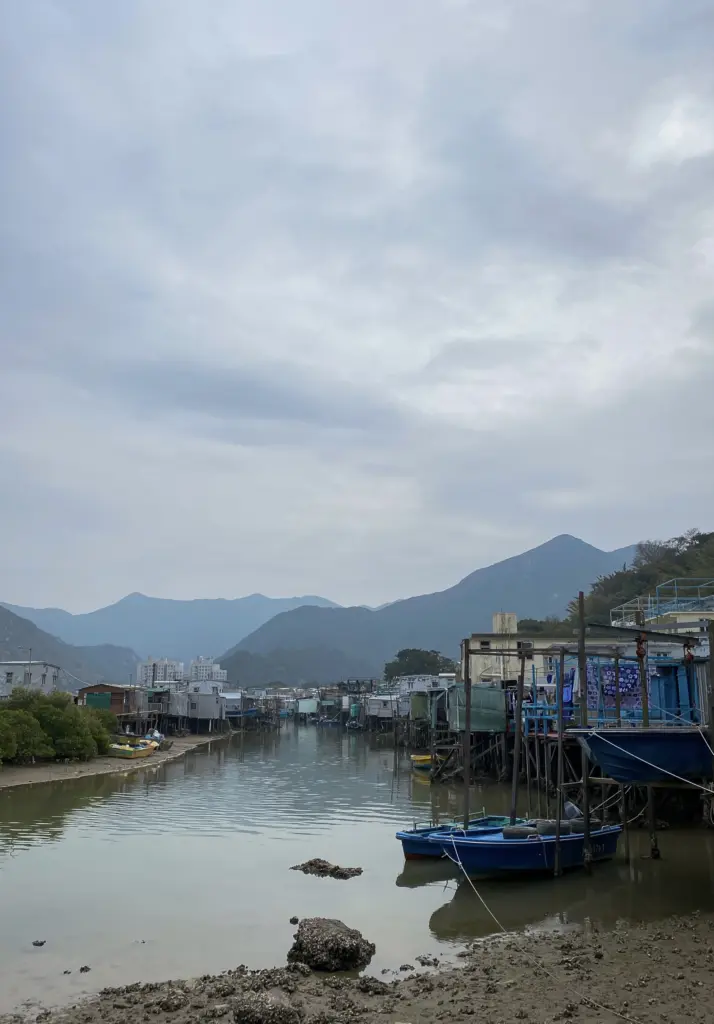
21. Catch the Pink Dolphins at Tai O Fishing Village
Head to Tai O Fishing Village, a charming enclave known for its stilt houses, fresh seafood, and the unique opportunity to spot the iconic pink dolphins. Yes, you heard it right – pink dolphins!
Hong Kong’s pink dolphins, officially known as Chinese white dolphins, are an endearing sight with their distinctive pinkish hue, and Tai O Fishing Village is one of the few places in the world where you can see them in their natural habitat.
They are quite rare though and sightings aren’t 100% so do temper your expectations, there have been plenty of success stories as well.
Beyond the dolphins, Tai O itself is worth exploring. As one of the last remaining fishing villages in Hong Kong, it offers a window into a way of life that’s largely disappeared from the rest of the city. The village is really quaint and picturesque, especially if you go off-the-beaten-path, away from the markets and close to the coast.
There are also hiking trails that you can do which takes you to amazing view points and I can’t stress this enough.
You can click the link to learn more about visiting Tai O Fishing Village.

22. Reach Lantau Island's Highest Point at Lantau Peak
As you may have noticed by now, I’m simply a lover of nature so I’m just naturally drawn to these places. Conquering Lantau Peak, the second-highest peak in Hong Kong, is another worthwhile activity if you want outstanding views.
Situated on Lantau Island, this peak stands at an impressive 934 m (3,064 ft) above sea level and offers some of the most breathtaking views you’ll find in the city.
The hike to the summit is no walk in the park. It’s steep and challenging, but incredibly rewarding.
Once you’ve savored the views and caught your breath, you can hike down towards the Po Lin Monastery and the Tian Tan Buddha (you can actually start the trek from this side as well), or you could take the Ngong Ping 360 cable car down for a more leisurely descent with equally stunning views.
If you’re curious those boards are actually part of what’s called the Wisdom Path which is right beside the trailhead for Lantau Peak, written on them are words from the Heart Sutra, an important Buddhist text about the concept of emptiness.
23. Sky100 Observatory Deck
We’ve been conquering plenty of peaks so far but how about just a last one? This time it’s Hong Kong’s tallest building!
Sky100 Hong Kong Observation Deck offers another extraordinary view of the city, situated on the 100th floor of the International Commerce Centre (ICC) – the tallest building in Hong Kong – Sky100 provides an inside look into the heart of the city from an altitude of 393 m (1,289 ft) above sea level.
While Victoria Peak offers an elevated, panoramic perspective of Hong Kong from the outside looking in, Sky100 places you smack-dab in the middle of the action.
You’ll get a bird’s-eye view of the tightly packed skyscrapers as the sprawling urban landscape that stretches out in all directions.
What sets Sky100 apart is its stunning 360-degree indoor observation deck. This means that you can marvel at Hong Kong in its entirety without any obstructions, and without worrying about the weather. From Kowloon to Hong Kong Island, and from the New Territories to the South China Sea, you can see it all!
There’s even a Virtual Reality (VR) Sky-High Walk that lets you “walk” outside the deck for an thrill.
You can get your skip-the-line entry tickets for Sky100 here!
Where to Stay in Hong Kong
Hong Kong can be a bit pricey and it was a bit difficult for me to find the right balance between comfort and affordability, but I was satisfied with my choice in the end. Here are some of my recommendations for Hong Kong:
Best Hotels in Hong Kong
- iClub Sheung Wan Hotel – this is where I personally stayed and found it to be within my budget, it’s modern, chic and quiet. The location is perfect as it was near plenty of restaurants and just a few meters away from the train station and the bus stop. Man Mo Temple is especially close. The bathroom was superb and the bed amazing after a day of exploration!
- Bishop Lei International House – boasts stunning city skyline views and offers an outdoor pool, fitness center, and free WiFi throughout the property. You can also enjoy the well-equipped gym, poolside sun loungers, and a quiet reading room.
- Four Points by Sheraton – offers comfortable air-conditioned rooms and complimentary bikes for your use. Each room is well-equipped with a flat-screen TV featuring satellite channels and a safety deposit box. Bed linen and towels are provided for added comfort.
Best Hostels in Hong Kong
- Ashoka Hostel – enjoy clean common areas and dorm lockers. Their licensed facility ensures safety, comfort, and affordability. Additionally, Ashoka Hostel offers discounted tickets for popular attractions like Ocean Park and Disneyland.
- Homy Inn North Point – comes with free Wi-Fi, flat-screen TVs, and air-conditioning. Each room has a private bathroom with a shower, complimentary toiletries, and hairdryers. The hostel provides a welcoming 24-hour front desk service.
- Check Inn HK – offers complimentary water, local calls, Wi-Fi, and comfortable beds. Check Inn HK also offers various free services such as irons, computers, hair dryers, and adapters. To enhance the guest experience, the staff regularly organizes dim sum gatherings and hiking activities.

How to Get Around Hong Kong
Hong Kong is a compact city that boasts an extensive, efficient, and easy-to-use public transportation network. Here’s how you can effortlessly get around Hong Kong:
- MTR (Mass Transit Railway): The lifeline of Hong Kong, the MTR, covers all major districts, including stops at most tourist attractions. It’s the fastest, most efficient way to travel around the city and its outskirts.
- Trams: Also known as Ding Dings, jump on these affordable double-decker trams for a unique perspective of city life, especially if you grab a front-row seat on the upper deck.
- Buses and Minibuses: For routes not covered by the MTR, buses, and minibuses come in handy.
- Ferry: You can also take a ferry when going to other parts of the island such as Lantau Island.
- Taxis: Hong Kong taxis are plentiful and reasonably priced. There are three types, distinguished by their colors – red for urban areas, green for the New Territories, and blue for Lantau Island.
- Car: There’s always an option of driving around of your own, Hong Kong is a small city but you can reach places beyond the city such as the mountains much more easily by renting a car.
How to Stay Safe in Hong Kong
Despite being one of the safest cities globally, it’s always prudent to stay aware of your surroundings, particularly in crowded areas to avoid petty theft.
Also, take note of the local emergency number – 999, which connects to police, fire, and ambulance services in case of an emergency.
In Hong Kong, as with any destination, securing comprehensive travel insurance is a must-do. I recommend Safety Wing as they offer flexible policies and extensive coverage. Nothing’s better than travelling with a peace of mind knowing you’re in safe hands.

Best Time to Visit Hong Kong
The ideal time to visit is often considered to be during spring, from March to May, when temperatures range from a pleasant 20°C – 25°C (68°F – 77°F).
The summer months from June to August are hot and humid with temperatures reaching 26°C – 33°C (79°F – 91°F). This season witnesses the city come alive with various festivals, though it’s also the rainy season with occasional typhoons.
Autumn, running from September to November, is another great time to visit. The temperatures are warm but not hot, ranging between 22°C – 28°C (72°F – 82°F), and the humidity is low. The clear, sunny skies of autumn are ideal for sightseeing.
Winter in Hong Kong, from December to February, is mild and dry with temperatures between 14°C – 20°C (57°F – 68°F). While the city doesn’t experience snow, a sweater does come in handy. I was there during January and took a nice cold dip at Shek O beach!
What to Know Before Going to Hong Kong
-
Language: While Cantonese is the most widely spoken language in Hong Kong, English is also an official language. Many locals, especially in urban areas, speak English fluently, and signs and menus are often bilingual.
-
Public Etiquette: When using escalators, stand on the right and walk on the left.
-
Electricity: Hong Kong uses a 220-volt supply with UK-style three-pin plugs. So, if your devices use different plugs, don’t forget to bring a travel adapter. I definitely made a mistake, it was great that I was able to make us of the adapter from a pocket wi-fi that I had with me at that time.
-
Octopus Card: Get an Octopus Card for seamless travel around the country, it works on buses, trains, and taxis. Another unique aspect is that it can go down to negative (to a certain extent) so you don’t have to worry if you don’t have enough balance.
-
Hot Drinks: Another cultural norm is that they serve only hot drinks as the default even during summer! Cold drinks cost extra.
Plan Your Trip to Hong Kong | Best Travel Resources
Book Your Accommodations
- Booking.com – the world’s leading online booking platform for accomodations around the world, they have an extensive amount of available listings with zero booking fees and best price guarantees.
- Hostelworld – a backpacker’s best friend, Hostelworld has the largest collection of hostels and guesthouses for affordable prices.
Don’t Forget Insurance
- SafetyWing – from Nomad Insurance, an insurance by nomads for nomads. They understand our lifestyle well and have really comprehensive and flexible plans that cater to any traveler.
Find Cheap Flights
- Kiwi.com – my go-to for booking and finding the cheapest flights and it’s helped me save tons of money. They do virtual interlining which is connecting flights from airlines that do not codeshare, so you can find routes that you wouldn’t be able to find normally.
Join Tours & Activities
- GetYourGuide – is one of the best places to find unique tours and activities. I found that it’s an excellent way to meet fellow travelers and create fond memories. They are not only limited to tours as they also offer niche services such as skip-the-line tickets or private transfers.
Catch a Ride
- Rentalcars.com – nothing beats the freedom of the road, Rentalcars.com is the world’s largest online car rental service. They operate across 160 countries so they’re the perfect partner to work with if you find yourself wanting a ride.

